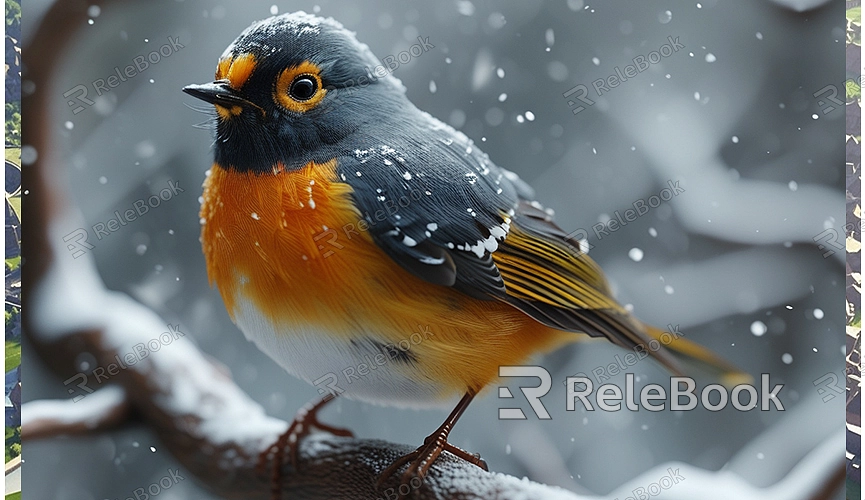How to Render Camera Zoom in Blender 2.8
Blender 2.8 is a powerful 3D creation tool that not only supports complex modeling and rendering but also enables a range of camera effects. Camera zoom is a common technique in animation and video production used to emphasize details or create dramatic effects. This guide will detail how to achieve camera zoom effects in Blender 2.8, including setting up the camera, adjusting lenses, and rendering the animation.

Setting Up the Camera View
In Blender 2.8, the first step is to set up and adjust the camera view. These settings will impact the final render results.
1. Add a Camera: In the 3D view, go to the "Add" menu and select "Camera." Blender will add a new camera object to the scene. You can switch to the camera view by pressing the “0” key on the numeric keypad to see the current view from the camera.
2. Adjust Camera Position: Once you select the camera object, you can move, rotate, and scale the camera in the 3D view to determine its position and orientation in the scene. Use the "Move" (G), "Rotate" (R), and "Scale" (S) tools to adjust the camera settings to capture the desired shot.
3. Set Camera Lens: In the "Camera" properties panel, you can set the camera lens type and focal length. Common lens types include Perspective and Orthographic. The Perspective lens is suitable for most scenes and simulates real-world camera effects.
Achieving Camera Zoom Effects
Camera zoom effects can be achieved by adjusting the camera's focal length or using animation keyframes. Here are the steps to create a camera zoom effect:
1. Adjust Focal Length: The focal length setting directly affects the zoom effect in the view. In the "Camera" properties panel, locate the "Focal Length" option. Increasing the focal length will make the scene appear "closer," while decreasing it will make the scene appear "further." Adjust the focal length at the desired points in time to simulate a camera zoom effect.
2. Add Keyframes: To create a zoom effect in your animation, set keyframes for the camera’s focal length. First, move the timeline to the starting point of the animation and right-click on the “Focal Length” setting, selecting “Insert Keyframe.” Next, move to the end point of the animation, adjust the focal length, and insert another keyframe. This will create an animation of the camera’s focal length, achieving the zoom effect.
3. Adjust Camera Movement: For a smooth zoom effect in the animation, you can adjust the interpolation type of the keyframes. In the "Graph Editor," select the keyframes and set an appropriate interpolation mode, such as "Bezier" or "Linear," to achieve a smooth transition effect.
Rendering Camera Zoom Effects
After setting up the camera and adjusting the animation, the next step is to render your animation. The rendering settings directly impact the final video quality and effect.
1. Set Render Output: In the “Output Properties” panel, choose the render output format. For video rendering, it is recommended to use the “FFmpeg Video” format and set the container to “MP4.” In the “Encoder” settings, select “H.264” as the video encoder, and set the audio encoder to “AAC” if needed.
2. Configure Resolution and Frame Rate: Ensure that the resolution and frame rate are set appropriately. Common Full HD resolution is 1920x1080, and the frame rate can be set to 24 or 30 frames per second. Proper resolution and frame rate settings ensure video clarity and smoothness.
3. Render the Animation: Once all settings are complete, click on “Render Animation” in the “Render” menu. Blender will start rendering the animation frame by frame and save it as the specified format video file. This process may take some time depending on the complexity of the scene and rendering settings.
Rendering Optimization Tips
1. Improve Render Quality: When using the Cycles rendering engine, adjusting the sample count can improve render quality. Increasing the sample count will reduce noise but also increase render time. Set an appropriate sample count to balance image quality and rendering efficiency.
2. Use Denoising: Blender’s denoising feature effectively reduces noise in renders, especially useful with low sample settings. Enabling the denoising feature can enhance image clarity and detail.
3. Optimize Scene Settings: Reducing unnecessary details and optimizing material settings can speed up rendering. Using simplified geometry and lower-resolution textures can improve render performance.
Implementing camera zoom effects in Blender 2.8 is relatively straightforward. By adjusting focal length and using keyframe animation, you can easily create zoom effects in your animation. Once you’ve set up the camera position, focal length, and animation keyframes, render your animation as a high-quality MP4 video. Mastering these techniques will enable you to create professional-level animation effects and enhance the quality of your projects.
If you need high-quality 3D textures and HDRIs for your models and virtual scenes, you can download them for free from [Relebook](https://textures.relebook.com/). For exquisite 3D models, visit [Relebook](https://3dmodels.relebook.com/), which offers a wealth of premium 3D resources. These resources will help you further optimize your projects and make your animations more captivating.

